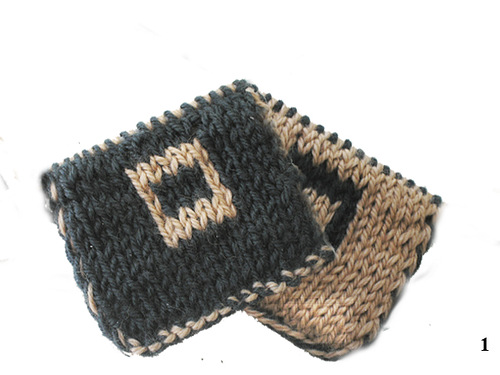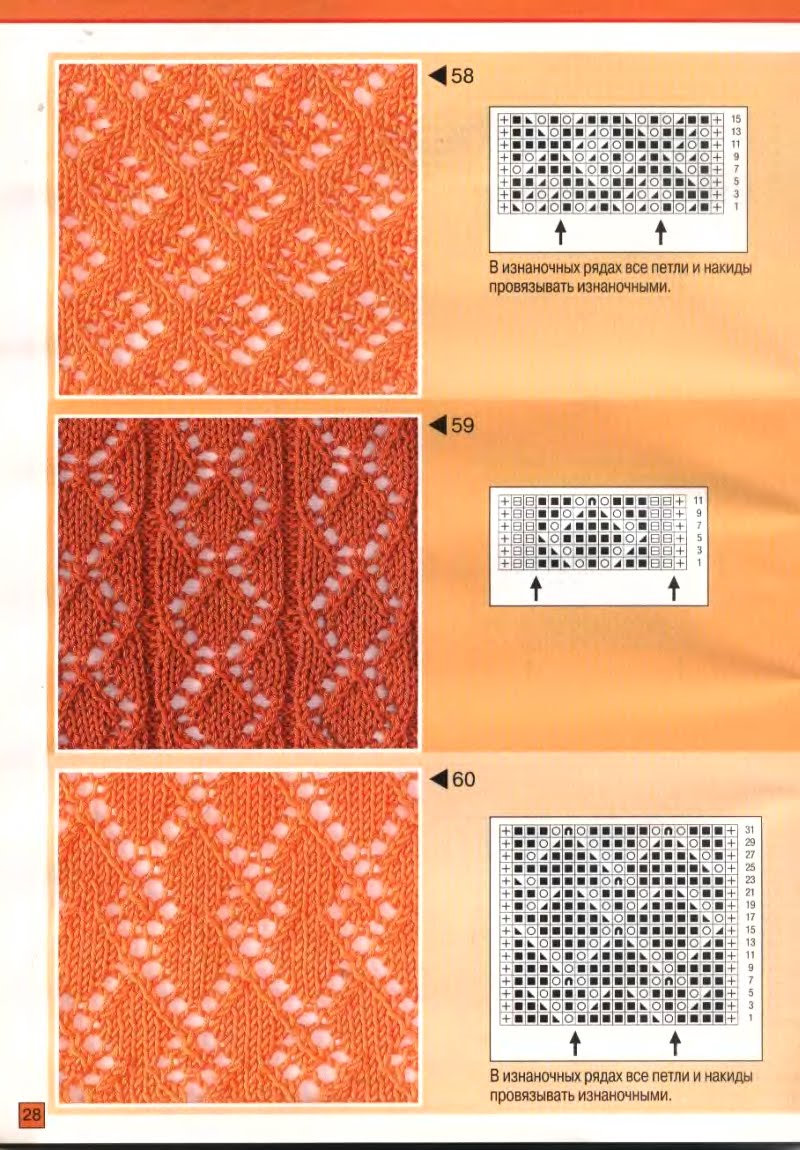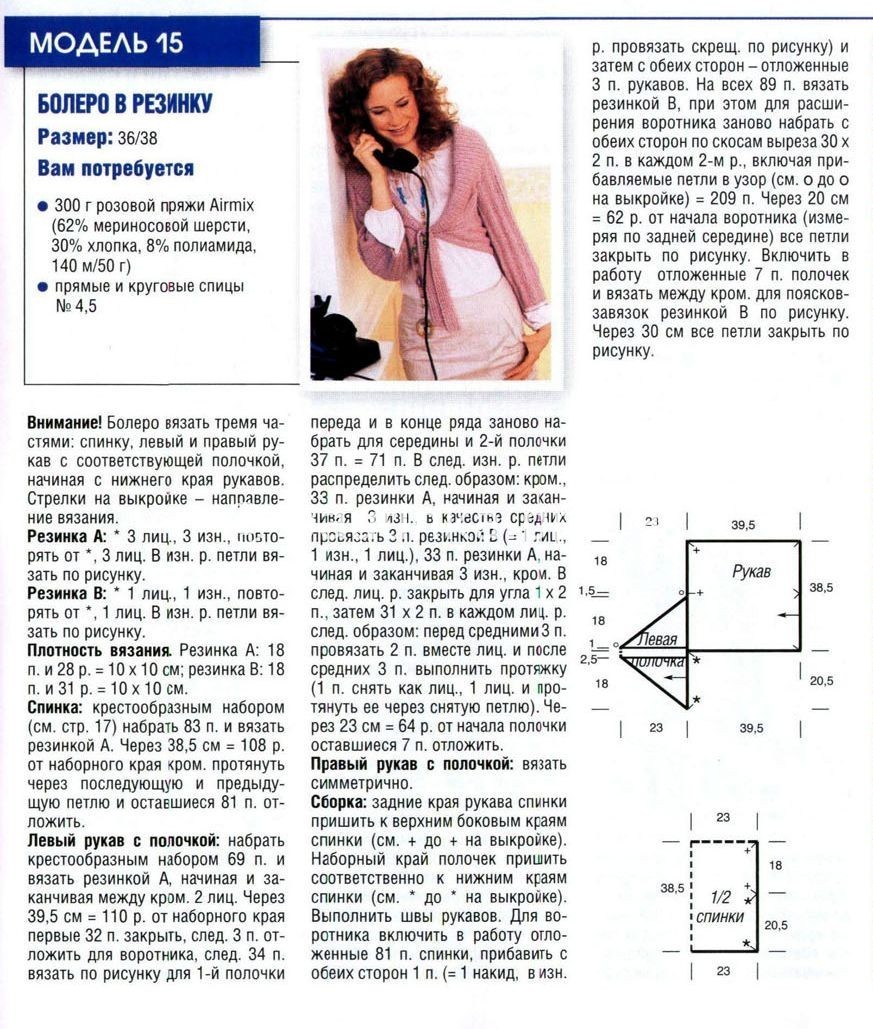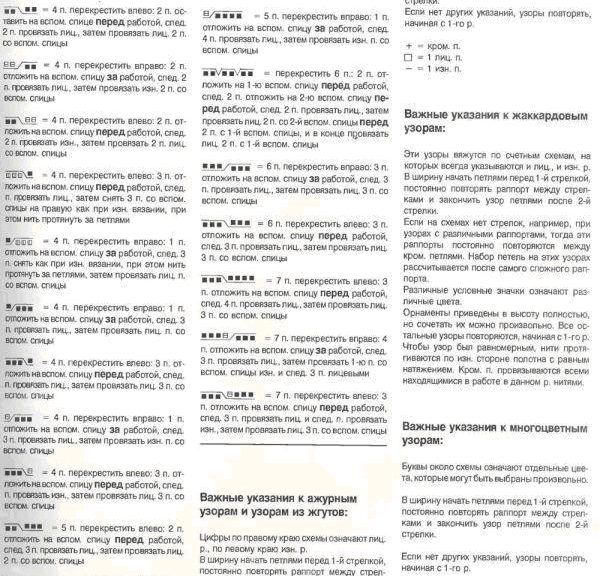
Learning to read symbols when knitting
Content
- Abbreviations - how to understand them
- Legend in Figures
- Legend of series in the scheme
- The control sample and the number of loops in it
- Needles and what is their number
- Table of rarer notation
- Video: Learning to decipher conventions
Any beginner needlewoman, for the first time takingIn the hands of a scheme for knitting, see a lot of incomprehensible symbols and symbols for themselves. In this article, we try to restore order in all these schemes and tables. Conditional stitch images help reduce the time to read the description of the pattern.
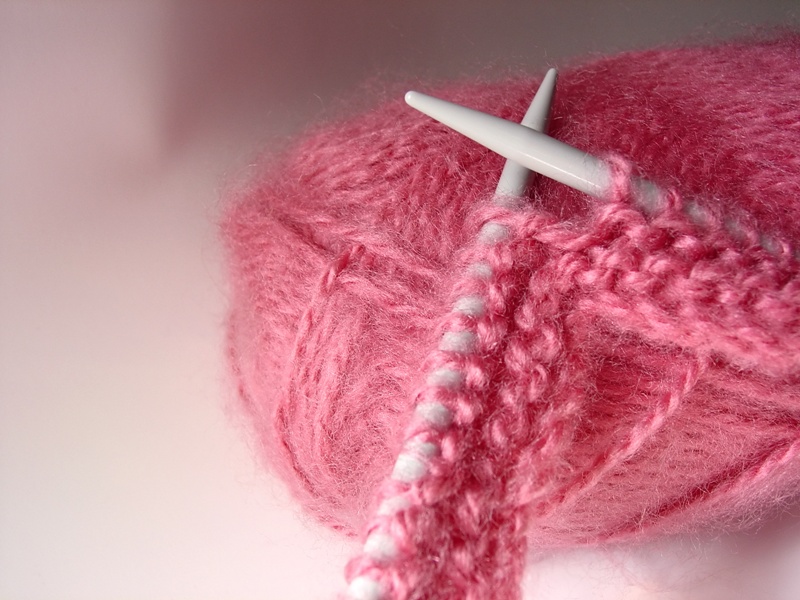
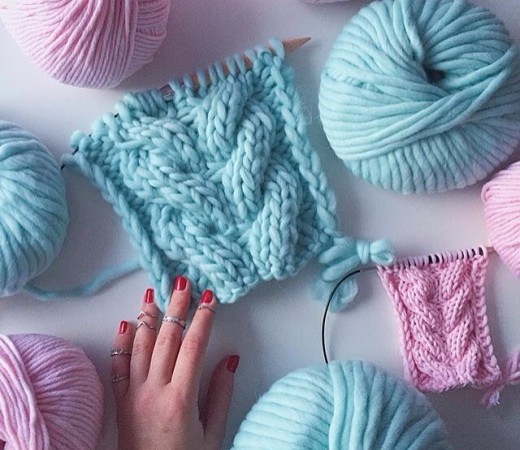

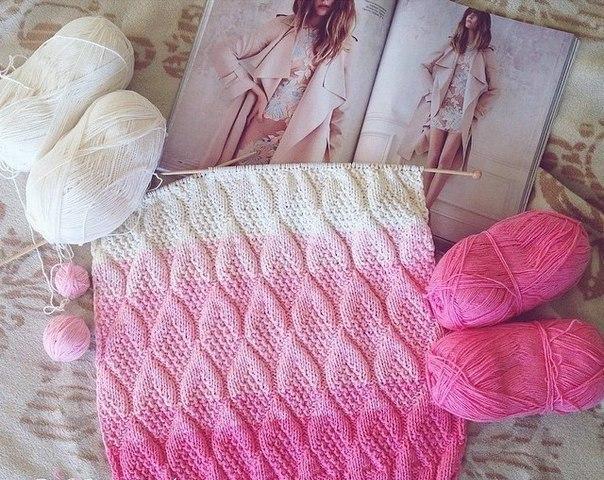

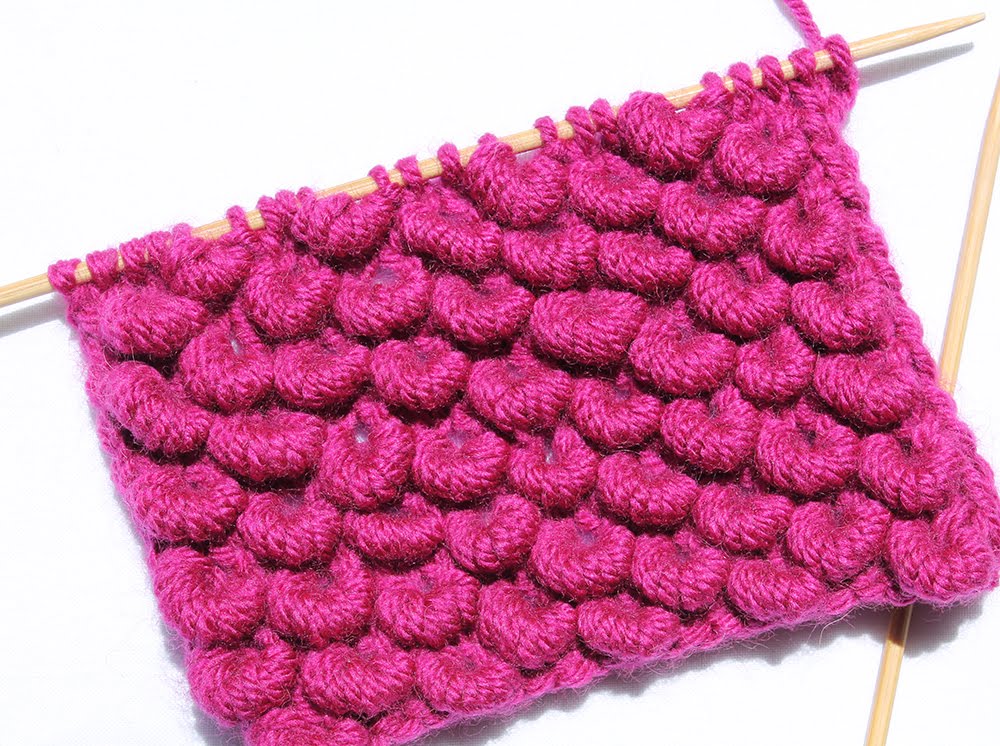
Abbreviations - how to understand them
In fact, things are much simpler than it may seem. Decoding of abbreviations is usually signed at the beginning of the text. If this is not the case, you can always use our instructions:
- Ln - the front loop;
- Ipt - back loop;
- N - loop;
- Nk - napid;
- Kr - edgeband;
- P is a series;
- Spl - crossed LP;
- Sip - crossed IP.
Legend in Figures
Schemas are a description of the design in the form of notation. It is easy to understand them, having a small cheat sheet.
Hinge loop When knitting PI, the thread is located in front, i.e. Before the canvas. The right needle is threaded into the loop from top to bottom and grasps the working thread.
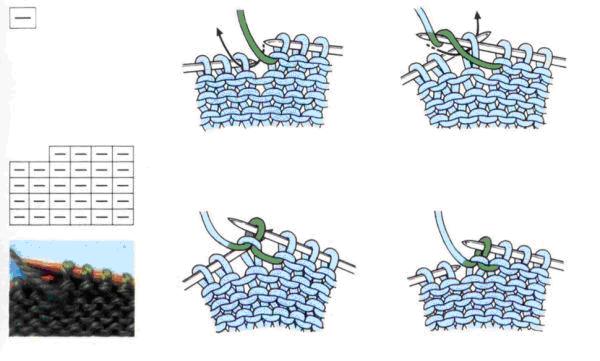
Loop front We place the working thread behind the blade. We put the right knitting needle into the loop and grab the thread, which we hold with the index finger.
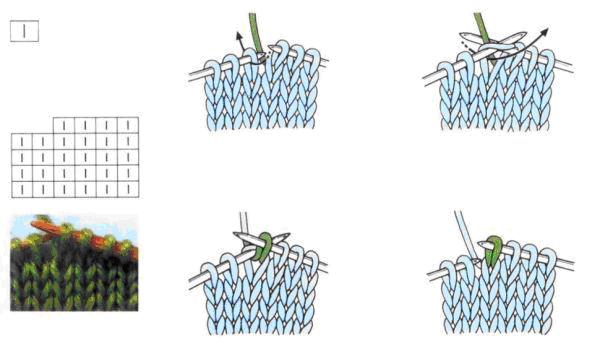
In a number of schemes, there are such symbols as crossed loops.
Crossed LP The direction of needle insertion is from right to left.
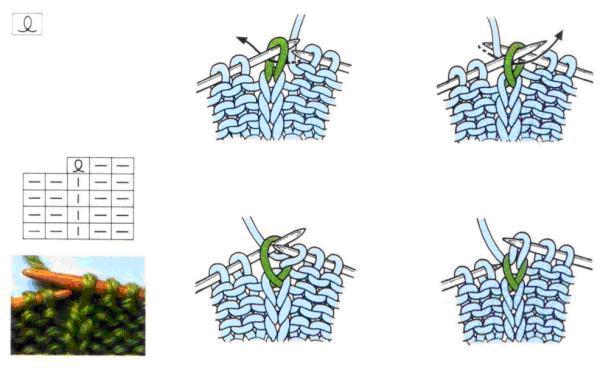
Crossed PI There is also a cross of threads, only on the wrong side.
Crossed loops are very often used at the junction of threads of different colors, or when changing from one pattern to another. Such an application makes it possible to significantly increase the density of knitting.

Nakid Nakid designation is an empty circle. It is usually used in additions to increase the number of loops on the spokes, as well as to obtain a beautiful openwork pattern. The thread just throws itself on the needle.

A number of circuits contain double loops withSlopes. For this, 2n. Are tied together as a front or back. Depending on the wall behind which the loop is attached, the slope of the pattern will be one or the other. The notation is as follows.
2LP together: tilt to the right Working with a spoke we pick up at once 2p. Behind the front walls, we catch the thread. With the left needle, we drop 2n.
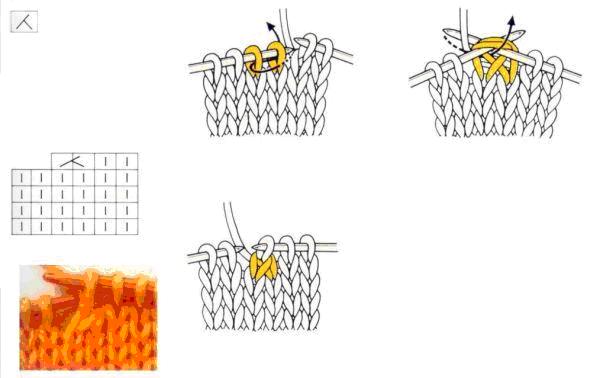
2LP together: the slope to the left Knitting begins with the rise of 1p., Its revolution and return to the left knitting needle. Then we use the working needle to pick up the back walls of Zn and tie it together.

Legend of series in the scheme
Some schemes are characterized by the indication of numbersSeries. This is done for the convenience of the wizard, so that the young needlewomen are not entangled. Numbers can stand on either side of the picture - one odd or even odd, or only on one side. Carrying out the pattern with knitting needles, cross out the rows on the chart that you have already passed. This calculation will help not to get lost in the figure.
The control sample and the number of loops in it
Each master before knitting on knittingMust calculate the number of loops to be typed. The calculation is made on a control sample. This is necessary in order to understand what your knitting density is. With the same number of loops, but if the density of knitting, the size of the product may vary significantly. So, take a description of the drawing that you will use for the product. Do not forget that the choice of knitting needles is also important, since the size of the pattern also depends on their size.
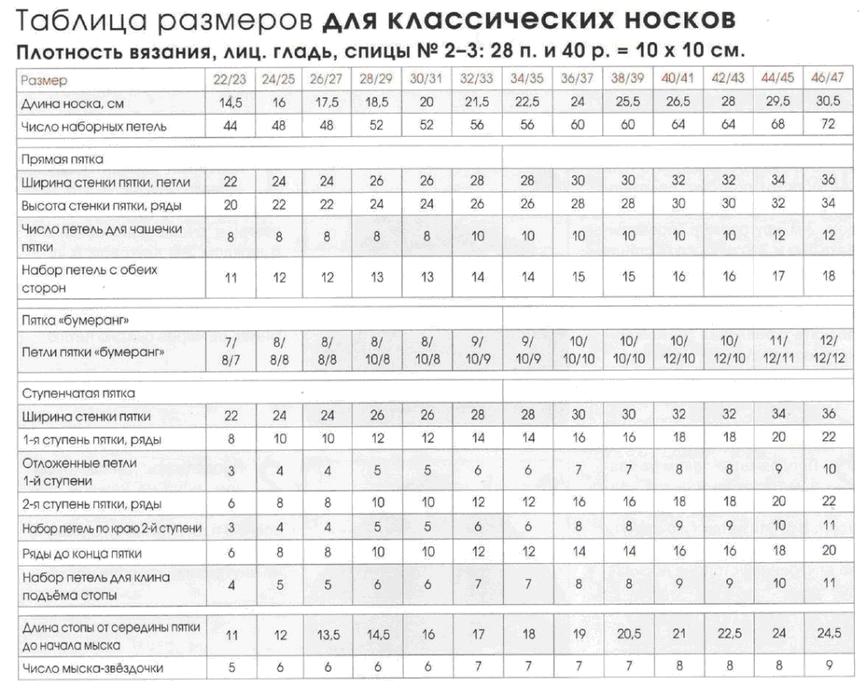
On the spokes we perform a sample measuring 10 * 10 cm. It must be washed or stripped and dried. Now you can tell how to calculate the number of loops.
We measure the length of the resulting piece by a ruler. The last 2-3 items can be discarded. We consider how many points are in this sample. The result should be written down. Divide the figure by centimeters. We get, for example, that in 1 cm of knitting there is 5n.
We measure the width of the product, multiply it byNumber of loops - get the initial number of loops for the set. In the same way we act with rows - they also need to be calculated first in 1 cm, then multiplied by the length of the product.
In describing the calculations, the followingConventional symbols: KO - control sample. Pl is the density. You have to carefully calculate, because it will depend on how well you tie the thing, guess with the size.
In addition to the schemes for knitting, you can find such a thing as the "Size Chart".
The calculation is given for all sizes. At the top of the table, you can find the conventions that were described above. The table always indicates the density of knitting. The designations may vary, but the principle remains the same: for each product size, the number of loops, number of spokes, width and length of the finished part of the product are indicated. Having made a simple calculation, the skilled worker can understand from which scheme to start, which drawing to choose, how many numbers to dial.
Needles and what is their number
Knitting needles are numbered. There are conditional numbers adopted in different countries.
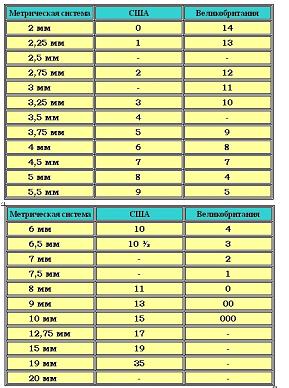
The calculation for Russia is simple: The number corresponds to the diameter of the needle in millimeters. Legend for other countries may differ. The table below shows the correspondences of Russian, American and English spokes.
If the numbers of the used spokes are not indicated in the diagram,You can make your own calculation. Take the thread that you will make the product, and twist it. Its density should not be too strong. Take the ruler and measure the diameter of the flagellum. The resulting size is the number of spokes you need to take to work with this yarn.
If you want to reduce the density of knitting, make the fabric slightly loose, just take a needle of a larger size than the formed flagellum.
Notations may be others. Each needlewoman can come up with her additional conventional images of loops. Some of them can be found less often than others.
Table of rarer notation
The table of rarer notations demonstrates that many conditional images in this table can be met rather seldom, but that they do not frighten you, we give them too.
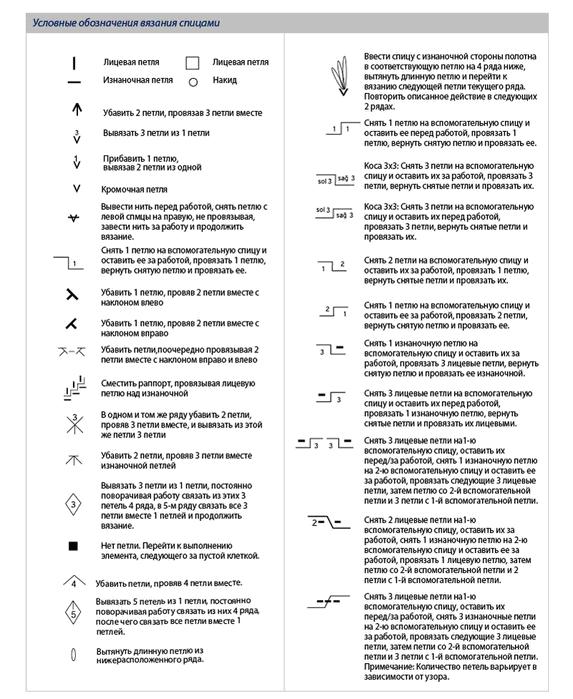
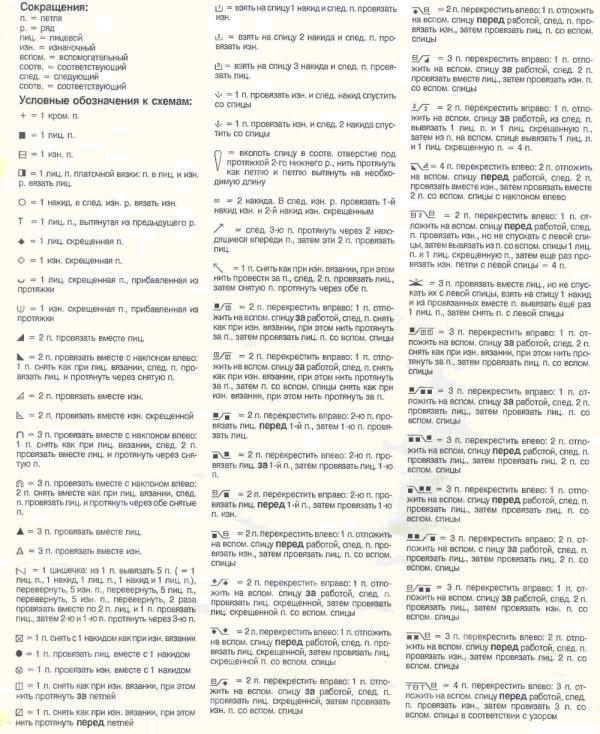
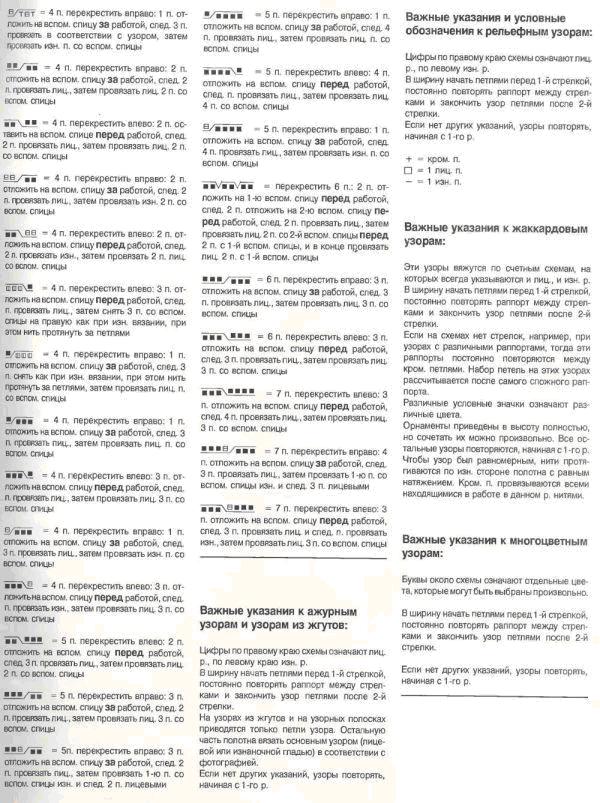
Video: Learning to decipher conventions
